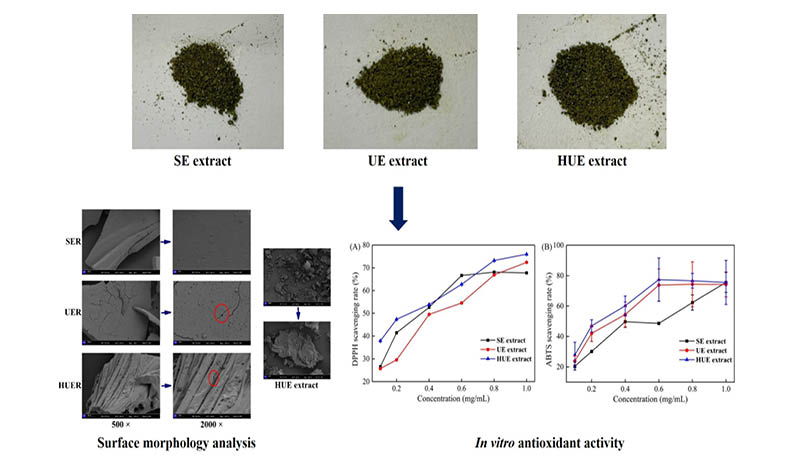High-pressure ultrasonic-assisted extraction of cannabinoids from industrial hemp leaves: Structure analysis and antioxidant activity
DOI:
https://doi.org/10.17344/acsi.2024.8822Abstract
Cannabinoids are very valuable natural products of industrial hemp. In this work, the high-pressure ultrasonic-assisted extraction (HUE) technique was employed for the first time to extract cannabinoids from industrial hemp leaves. A maximum extraction yield (60.02 ± 0.09 mg/g) was obtained through the single-factor experiments, which was much higher compared to ultrasonic-assisted extraction (UE, 42.88 ± 0.02 mg/g) and stirring extraction (SE, 35.35 ± 0.07 mg/g). The optimized HUE conditions were: extraction time was 40 min, EtOH concentration was 60%, extraction temperature was 60℃, ultrasonic power was 400 W, RL/S was 20 mL/g, stirring rate was 400 rpm, and extraction pressure was 0.6 MPa. The total phenolic content (TPC, 244.36 ± 0.84 mg GAE/g extract) and the total flavonoids content (TFC, 0.27 ± 0.02 mg RE/g extract) of the HUE extract were also the highest. The HUE mechanism was revealed to some extent by several characterizations including surface morphology that HUE could deeply destroy the structure of leave particles. Furthermore, the in vitro antioxidant activity of HUE extract was the best among the three extracts. The EC50 values against DPPH and ABTS were 0.28 mg/mL and 0.25 mg/mL, respectively. In summary, this work confirmed that HUE was a suitable method for extracting cannabinoids and the obtained extract with a high content of cannabinoids had great application values.

Downloads
Published
Issue
Section
License
Copyright (c) 2025 Hang Li, Tian-Xiao Yang, Qingsheng Zhao, Yuan Zhu, Bing Zhao

This work is licensed under a Creative Commons Attribution 4.0 International License.
Except where otherwise noted, articles in this journal are published under the Creative Commons Attribution 4.0 International License
